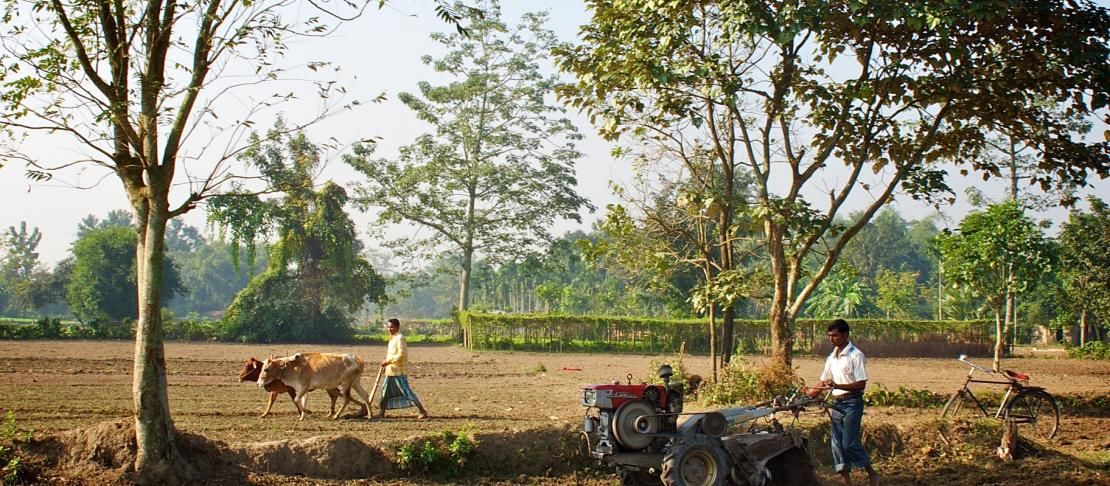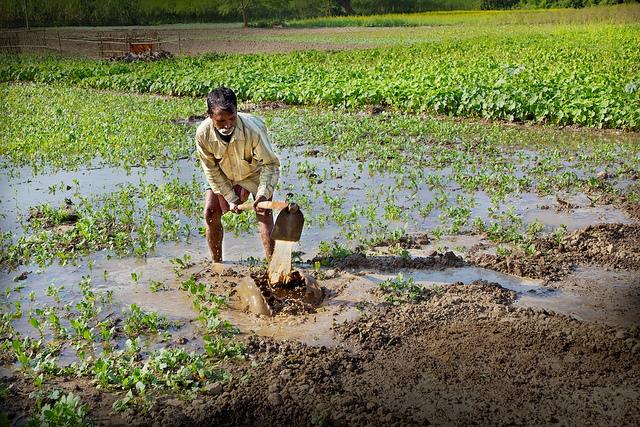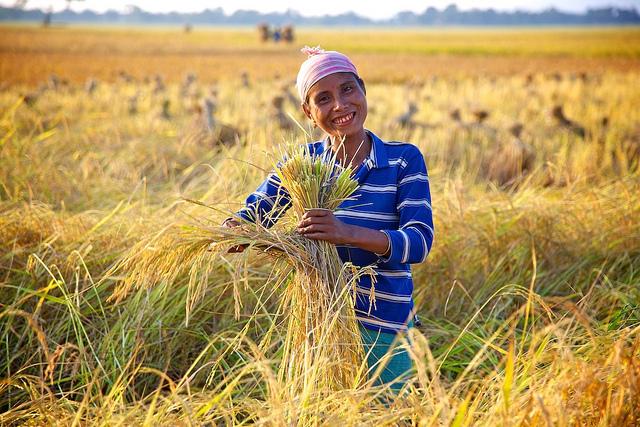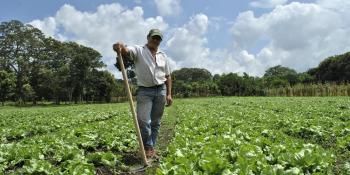How to accommodate farmers wary of rainfall insurance

The adoption of index-based insurance products among smallholder farmers has so far been disappointing. We interviewed Xavier Giné from the World Bank and co-author to the article "Barriers to Household Risk Management: Evidence from India" about key obstacles and issues for index-based insurance products.
Smallholder farmers traditionally rely on their communities and extended families to tide them over crop failure, receiving help when in need and helping others as they can. The catch with drought or flooding is that it typically hits the whole community at once.
As climate change makes drought and flooding more frequent and severe, notably in South Asia and Africa, weather shocks threaten to overwhelm vulnerable rural communities’ efforts to climb out of poverty. Further, ever-present weather threats prompt farmers to minimize risk by withholding costly agricultural inputs, which constrains their average yield and profit even in good times.
A promising way to manage weather risk is rainfall insurance, which pools risk beyond the reach of local weather. The challenge is to design insurance policies that are fair, economically sustainable and attractive to farmers. Uptake however has so far been disappointing. Now, a series of randomized field experiments in two rural communities in India has found out why.
Hard evidence on farmers’ concerns
"Price is only one factor affecting adoption,” said Xavier Giné, of the World Bank’s Development Economic Research Group. “We found evidence that other significant frictions constraining demand were farmers’ lack of trust in the insurance provider and their lack of liquidity. Rainfall insurance for smallholders is expensive because delivering many small policies runs up costs. Policies pay out to policyholders on average only 46 per cent of what policyholders pay in premiums, well below the 65-75 per cent payout ratio typical of retail insurance in the United States."
Researchers calculated that rainfall insurance priced to offer American payout ratios would increase demand from smallholders by up to two-thirds. However, uptake is currently so low that even improvement by such a large ratio would leave most farmers uninsured.
Get the article: Barriers to Household Risk Management: Evidence from India
The research was conducted in districts of Andhra Pradesh and Gujarat selected for being drought-prone and highly reliant on rainfed agriculture, and for their strong association with two partner nongovernment organizations, which facilitated testing the impact of trust.

One failed rain could mean the difference between life and death. One way to manage climate risks is with index-based insurance. Photo: m. Foley
Gauging how much trust matters
"We isolated the effect during insurance educator visits to households," Giné explained. “We randomized whether the educator was first introduced to the household by a trusted local agent. If so, demand was 36 per cent higher. This is the first experimental evidence quantifying the role of trust in smallholder participation in financial markets.
Trust is especially important when the product is hard to understand. The insurance in the study is indexed to rainfall, with payouts determined by public records. Indexing allows quick calculation and disbursement without requiring households to file a claim.
Simple administration contains costs and — in theory though not yet in practice — allows claims for early monsoon failure to be paid in time to finance replanting in the same season.
Surveys found, however, that indexed insurance was poorly understood, not least because “millimeters of rainfall” was alien to farmers who planted their crops when the soil felt sufficiently moist to the desired depth.
Options for improving insurance policies
“One solution going forward would be to target index insurance to groups rather than individual households,” Giné said. “The decision to purchase insurance would then be taken by group managers, who are better educated and able to evaluate the product. In the end, this would reduce marketing costs and, because such groups are often formed for purchasing inputs or borrowing money, their liquidity constraints may be less binding.”
Liquidity rivals trust in affecting the decision to buy insurance or not. Among households who declined to purchase a policy, 81 per cent in Andhra Pradesh and 28 per cent in Gujarat cited their lack of funds.
Researchers experimentally confirmed the importance of liquidity constraints by randomly varying the compensation paid to households for their time spent being interviewed; where high compensation provided cash in hand to pay for a policy, uptake improved by 39-41 percentage points. Some purchasers may have bought a policy mainly to please a generous interviewer, but the improvement was much greater than the significant 11-17 percentage point increase in uptake effected by a household visit alone.
Ways to minimize liquidity issues — in addition to targeting groups and paying claims promptly, as mentioned above — could include selling policies immediately after the harvest, when farmers have cash, or combining insurance with a short-term loan, perhaps linking the interest rate to the rainfall outcome.

trust and liquidity issues are key reasons to why farmers in India are not purchasing insurance products. Photo: m. Foley
Illustrating the chicken-and-egg challenge to establishing an insurance culture, demand was higher in villages where policyholders had previously received a payout and from households with insurance experience.
“Design improvements can allay farmers’ concerns, allowing rainfall insurance to earn a good track record,” Giné predicted. “And new technologies hold promise. Satellite foliage data may one day allow policies indexed on area crop yields to better match payouts to actual losses. And premiums and payouts may be collected and paid using mobile phones to reduce costs and enhance payout ratios.”
Can these design improvements and new technologies breathe life into rainfall insurance? How well do experimental results in India apply in other regions? In addition, are there other systems out there that's a better way forward to help farmers manage climate risks?
Further research is urgently needed to answer these questions, as climate change is already affecting rainfall and rural livelihoods.
Continue to discuss the challenges and opportunities with index-based insurance on our commentary section below, or on Twitter @Cgiarclimate and Facebook.
More on climate risk management and index-based insurance:
- Webcast: Science Seminar: Index-based insurance for agriculture
- Video: and blog story: Farmers reap the benefits from climate insurance scheme (India)
- Making index-based insurance work for the rural poor: Identifying the knowledge gaps
- Climate insurance only part of the risk-reduction puzzle
- Weather index insurance: new age risk management solution in South Asia
Peter Fredenburg is a freelance science writer with Freewheel Media, specialised in communicating issues such as climate change, water, agriculture and sustainable development. Follow us on Twitter for the latest updates: @Cgiarclimate



